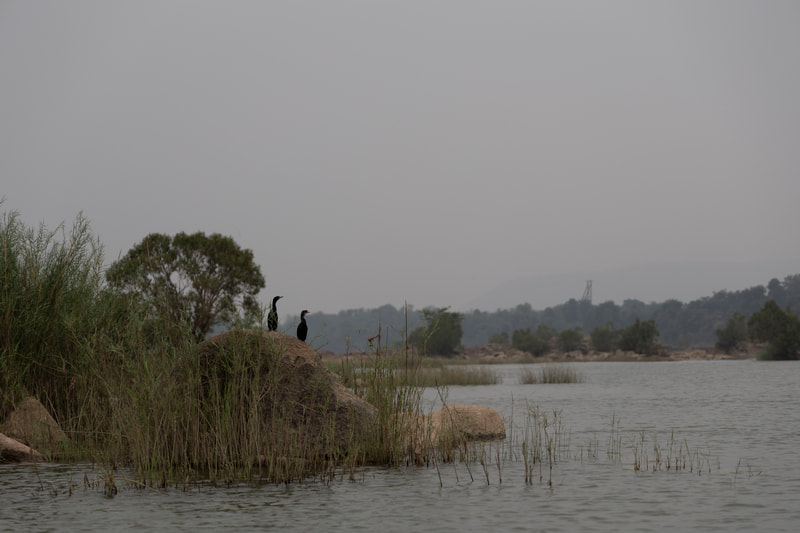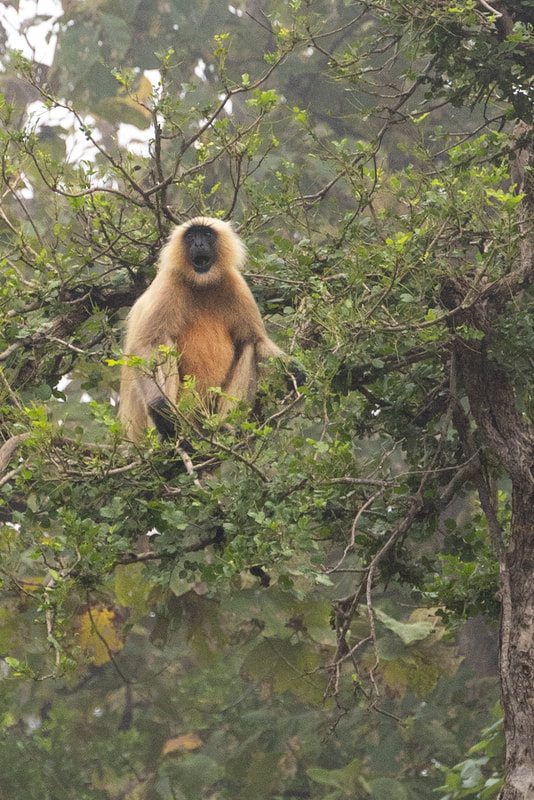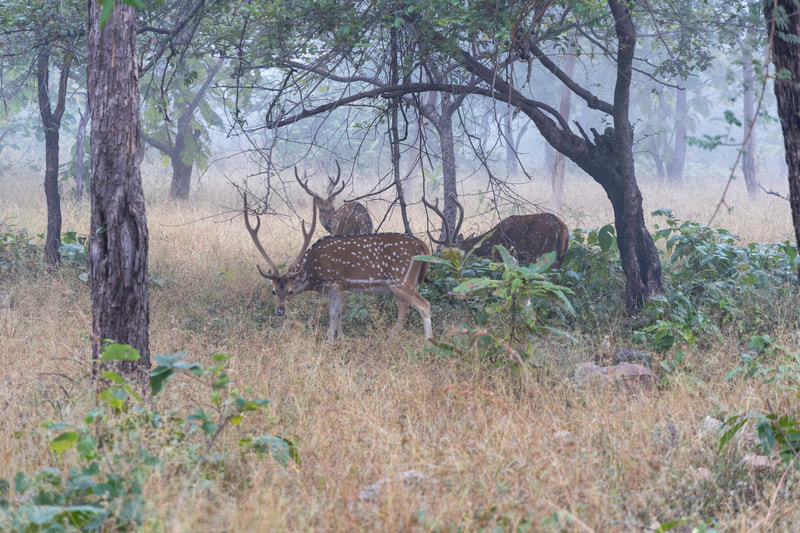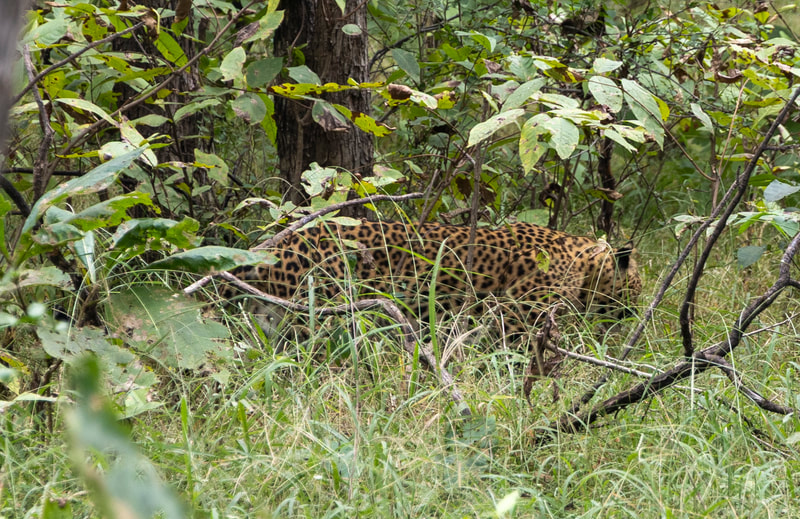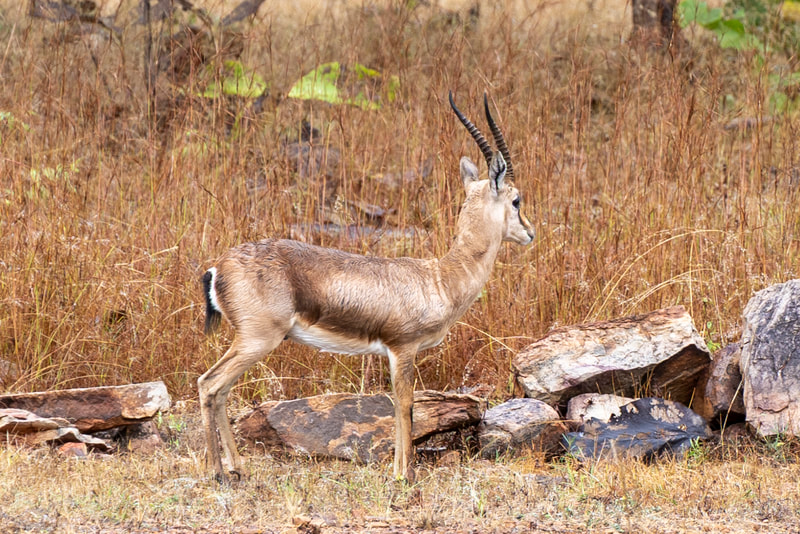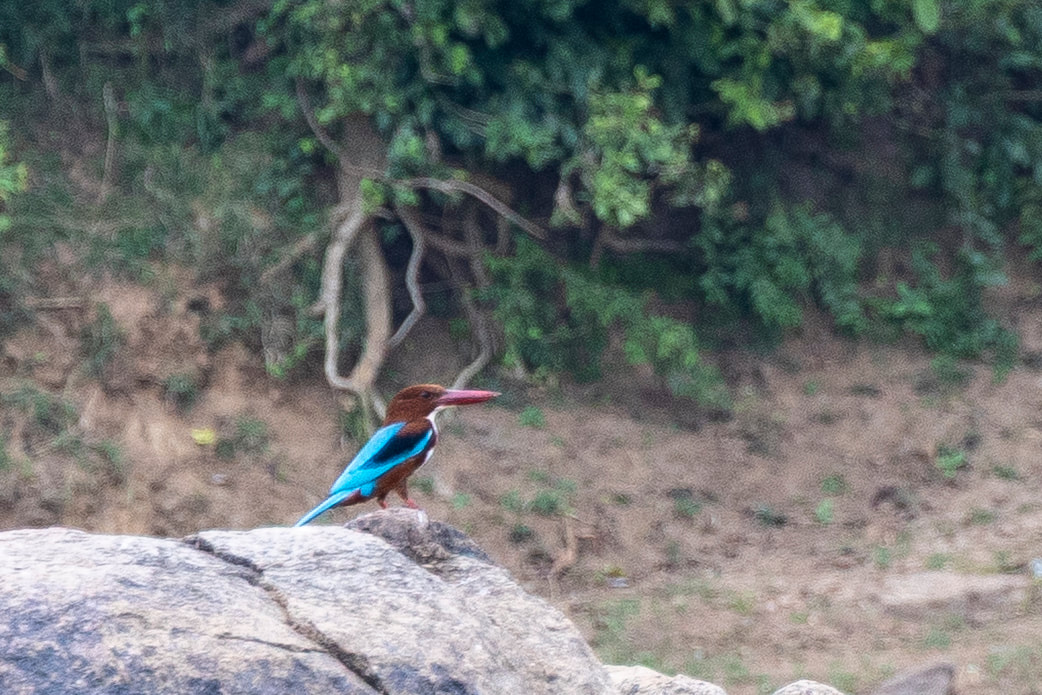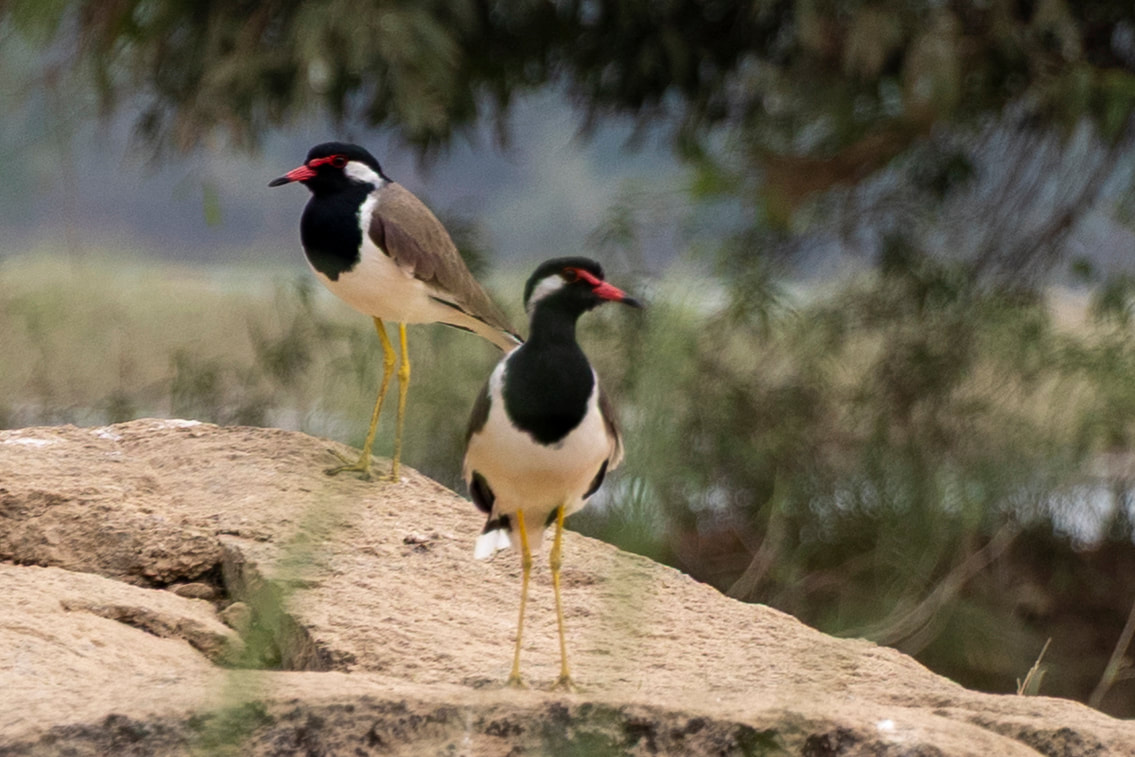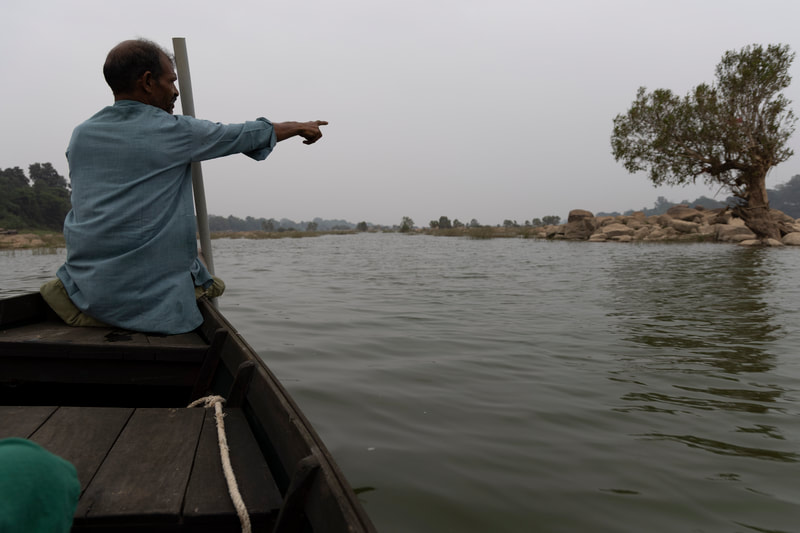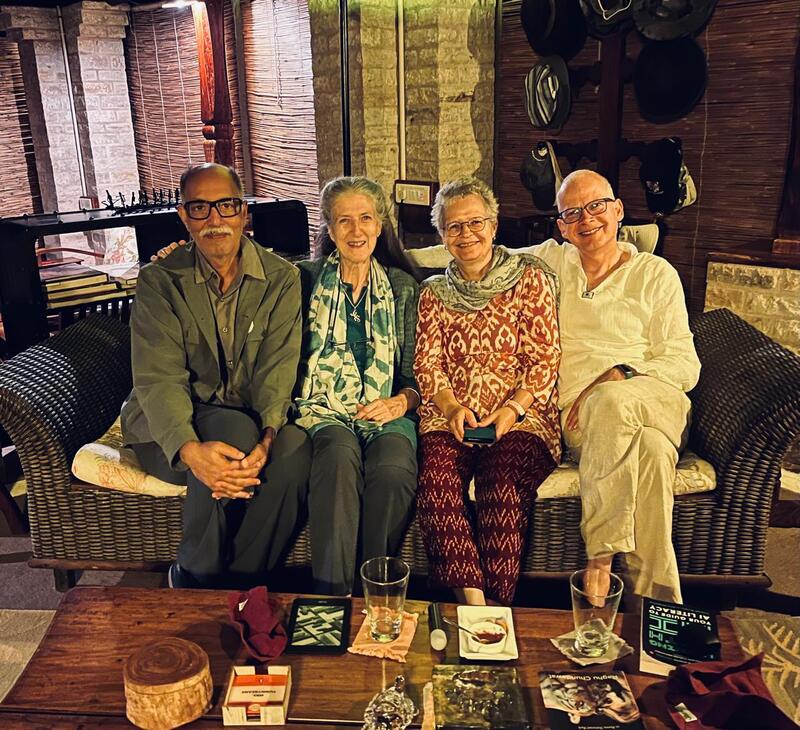|
Die Tempel von Khajuraho sind sehr berühmt und gehören zum UNESCO Weltkulturerbe. Sie wurden zwischen dem 10. und 11. Jahrhundert unter der Chandela-Dynastie erbaut, und gehören zu den faszinierendsten Zeugnissen mittelalterlicher indischer Kunst. Nur rund zehn Prozent der Skulpturen zeigen erotische Szenen – und doch sind es gerade diese Darstellungen, die Khajuraho weltberühmt gemacht haben. Diese Figuren sind jedoch weit mehr als Ausdruck körperlicher Leidenschaft. Sie verkörpern die Philosophie der vier Lebensziele des Hinduismus – Dharma (Prinzip des richtigen Handelns), Artha (materieller Wohlstand), Kāma (Freude, Sinnlichkeit und Liebe) und Moksha (Vereinigung der Seele mit dem Göttlichen) – und führen den Besucher symbolisch vom Sinnlichen zum Spirituellen. Die Tempel von Khajuraho veranschaulichen diesen spirituellen Weg auf eindrucksvolle Weise. Der Besucher begegnet zunächst dem Äußeren – dem Leben voller Bewegung, Musik, Liebe und Leidenschaft – und gelangt Schritt für Schritt in das stille Innere. Besonders beeindruckend ist, wie offen und unbefangen die mittelalterlichen Künstler mit Themen wie Liebe, Sexualität und Begehren umgingen. Selbst Darstellungen gleichgeschlechtlicher oder ungewöhnlicher Szenen sind hier Teil einer umfassenden Sicht auf das Leben – ein Ausdruck der tantrischen Vorstellung, dass alles Existierende, auch das Tabuisierte, Teil der göttlichen Schöpfung ist. Khajuraho erinnert uns daran, dass das Heilige und das Sinnliche keine Gegensätze sind. Beide sind Ausdruck derselben schöpferischen Energie, die das Universum durchdringt. Nach dem Besuch dieser eindrucksvollen Tempelanlage haben wir in einem Swiss Restaurant gleich außerhalb, mit herrlichem Blick auf die Tempel, zu Mittag gegessen. Gestärkt besuchten wir anschließend das Aadivart Tribal & Folk Art Museum. Es zeigt acht typische Häuser der Stämme der Region sowie traditionelle und moderne lokale Kunst – unter anderem Werke der Gond, von denen wir kürzlich in Hyderabad ein Gemälde erworben haben. The temples of Khajuraho are very famous and are a UNESCO World Heritage Site. They were built between the 10th and 11th centuries under the Chandela dynasty and are among the most fascinating examples of medieval Indian art. Only around ten percent of the sculptures depict erotic scenes – and yet it is precisely these depictions that have made Khajuraho world famous. However, these figures are much more than an expression of physical passion. They embody the philosophy of the four goals of life in Hinduism – Dharma (principle of right action), Artha (material prosperity), Kāma (joy, sensuality and love) and Moksha (union of the soul with the divine) – and symbolically lead visitors from the sensual to the spiritual. The temples of Khajuraho illustrate this spiritual path in an impressive way. Visitors first encounter the exterior – a life full of movement, music, love and passion – and then gradually enter the quiet interior. It is particularly impressive how openly and uninhibitedly medieval artists dealt with themes such as love, sexuality and desire. Even depictions of same-sex or unusual scenes are part of a comprehensive view of life here – an expression of the tantric idea that everything that exists, even the taboo, is part of divine creation. Khajuraho reminds us that the sacred and the sensual are not opposites. Both are expressions of the same creative energy that permeates the universe. After visiting this impressive temple complex, we had lunch at a Swiss restaurant just outside, with a magnificent view of the temples. Refreshed, we then visited the Aadivart Tribal & Folk Art Museum. It displays eight typical houses of the tribes of the region as well as traditional and modern local art – including works by the Gond, from whom we recently purchased a painting in Hyderabad. Les temples de Khajuraho sont très célèbres et font partie du patrimoine mondial de l'UNESCO. Construits entre le Xe et le XIe siècle sous la dynastie Chandela, ils comptent parmi les témoignages les plus fascinants de l'art médiéval indien. Seules environ dix pour cent des sculptures représentent des scènes érotiques, mais ce sont précisément ces représentations qui ont rendu Khajuraho célèbre dans le monde entier.
Ces figures sont toutefois bien plus que l'expression de la passion physique. Elles incarnent la philosophie des quatre objectifs de vie de l'hindouisme : le dharma (principe de l'action juste), l'artha (prospérité matérielle), le kāma (joie, sensualité et amour) et le moksha (union de l'âme avec le divin) et conduisent symboliquement le visiteur du sensuel vers le spirituel. Les temples de Khajuraho illustrent ce chemin spirituel de manière impressionnante. Le visiteur découvre d'abord l'extérieur – une vie pleine de mouvement, de musique, d'amour et de passion – puis pénètre peu à peu dans l'intérieur silencieux. Il est particulièrement impressionnant de voir avec quelle franchise et quelle désinvolture les artistes médiévaux abordaient des thèmes tels que l'amour, la sexualité et le désir. Même les représentations de scènes homosexuelles ou inhabituelles font ici partie d'une vision globale de la vie – une expression de la conception tantrique selon laquelle tout ce qui existe, y compris ce qui est tabou, fait partie de la création divine. Khajuraho nous rappelle que le sacré et le sensuel ne sont pas opposés. Tous deux sont l'expression de la même énergie créatrice qui imprègne l'univers. Après avoir visité cet impressionnant complexe de temples, nous avons déjeuné dans un restaurant suisse situé juste à l'extérieur, avec une vue magnifique sur les temples. Revigorés, nous avons ensuite visité le musée Aadivart Tribal & Folk Art. Il présente huit maisons typiques des tribus de la région ainsi que de l'art local traditionnel et moderne, notamment des œuvres des Gond, dont nous avons récemment acquis un tableau à Hyderabad.
0 Comments
Die erholsamsten Ferientage haben wir in einer fantastischen Eco-Lodge verbracht, im Sarai at Toria. Toria heisst das Dorf, wo sie sich befindet, Sarai ist ein altes (persisches) Wort für Gasthaus. Die Lodge wurde uns wärmstens empfohlen (merci D.& F. 🧡) und wird von einem sehr sympatischen Ehepaar geführt. Wir haben in einem grosszügigen Bungalow übernachtet, wurden gut verpflegt und hatten interessante Gespräche mit Gästen und den Gastgebern. Vom Sarai aus haben wir drei Safaris im Panna National Park unternommen, zwei davon früh morgens und eine in der Nacht. Das grosse Ziel ist es, Tiger zu sehen. Leider war uns das verwehrt, was ein wenig frustrierend ist, auch weil andere Gäste eine Tigermutter mit zwei Kleinen beobachten konnten. Ebenfalls nicht ideal war, dass zwei Safaris im Regen stattgefunden haben. Wir haben aber doch viele Tiere entdeckt, die spannendsten davon waren ein Leopard (den sieht man offenbar wirklich nur selten) und ein Schakal (den haben wir sehr gut beobachten können). Es waren auf jeden Fall genug Tiere, damit Yashi tolle Fotos machen konnte. Einen Tag haben wir in Kajuraho verbracht, der nächsten Stadt. Darüber berichtet Yashi im nächsten Beitrag. We spent the most relaxing days of our holiday in a fantastic eco-lodge, the Sarai at Toria. Toria is the name of the village where it is located, and Sarai is an old (Persian) word for guesthouse. The lodge came highly recommended (thank you D.& F. 🧡) and is run by a very friendly couple. We stayed in a spacious bungalow, were well looked after and had interesting conversations with guests and hosts. From the Sarai, we went on three safaris in Panna National Park, two of them early in the morning and one at night. The main goal is to see tigers. Unfortunately, we were denied this, which is a little frustrating, especially since other guests were able to observe a tiger mother with two cubs. It was also not ideal that two safaris took place in the rain. However, we did spot many animals, the most exciting of which were a leopard (which is apparently very rare to see) and a jackal (which we were able to observe very well). In any case, there were enough animals for Yashi to take great photos. We spent one day in Kajuraho, the nearest town. Yashi will report on that in the next post. Nous avons passé des vacances très reposantes dans un fantastique écolodge, le Sarai at Toria. Toria est le nom du village où il se trouve, Sarai est un ancien mot (persan) qui signifie « auberge ». Le lodge nous a été chaudement recommandé (merci D.& F. 🧡) et est tenu par un couple très sympathique. Nous avons séjourné dans un bungalow spacieux, avons été bien nourris et avons eu des conversations intéressantes avec les autres clients et les hôtes.
Depuis le Sarai, nous avons fait trois safaris dans le parc national de Panna, deux tôt le matin et un la nuit. Le but principal était d'apercevoir des tigres. Malheureusement, cela ne nous a pas été donné, ce qui est un peu frustrant, d'autant plus que d'autres clients ont pu observer une tigresse avec ses deux petits. Le fait que deux safaris aient eu lieu sous la pluie n'était pas idéal non plus. Nous avons tout de même découvert de nombreux animaux, les plus passionnants étant un léopard (que l'on voit apparemment très rarement) et un chacal (que nous avons pu observer de très près). Il y avait en tout cas suffisamment d'animaux pour que Yashi puisse prendre de superbes photos. Nous avons passé une journée à Kajuraho, la ville voisine. Yashi en parlera dans le prochain article. |
About usWe are a couple in the mid-fifties and are going to live for two years in Hyderabad, India. Time in Hyderabad
Archives
November 2025
Categories |












